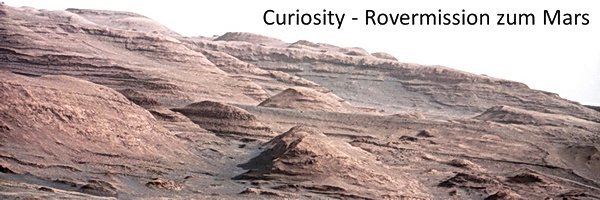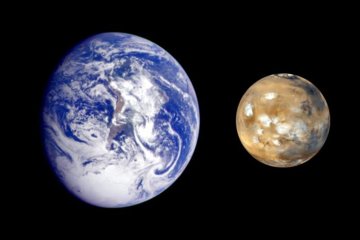
Curiosity: Exploring the early history of Mars
On August 6th, 2012 (around 7:18 am CEST) NASA's rover Curiosity (also known as Mars Science Laboratory, MSL) landed in Gale crater on Mars. Gale is a 154 km diameter crater located at 5.4° South 137.8°East. Gale is estimated to have formed between 3.8 and 3.5 billion years ago. A characteristic feature of Gale is a 5 km high central mound (unofficially named Mount Sharp). Orbital data indicate that the mound is stratified and contains both phylosilicates (clays) and sulfate strata. The mound was likely formed by sedimentation and obtained its current shape by differential erosion (soft materials eroding faster than harder materials). The mission aims at characterizing the fine structure of the mound to trace its geologic history. The phylosilicate and sulfate deposits were likely formed early in the evolution of the Martian surface. The characterization of these deposits thus provides a window into the early history of Mars.
Scientific goals:
Main focus of scientific analyses is the chemistry and mineralogy of soils and rocks and the search for and characterization of organic compounds in Martian surface material. In addition the rover has a weather station and instrumentation to measure the current radiation level on the surface of Mars.











